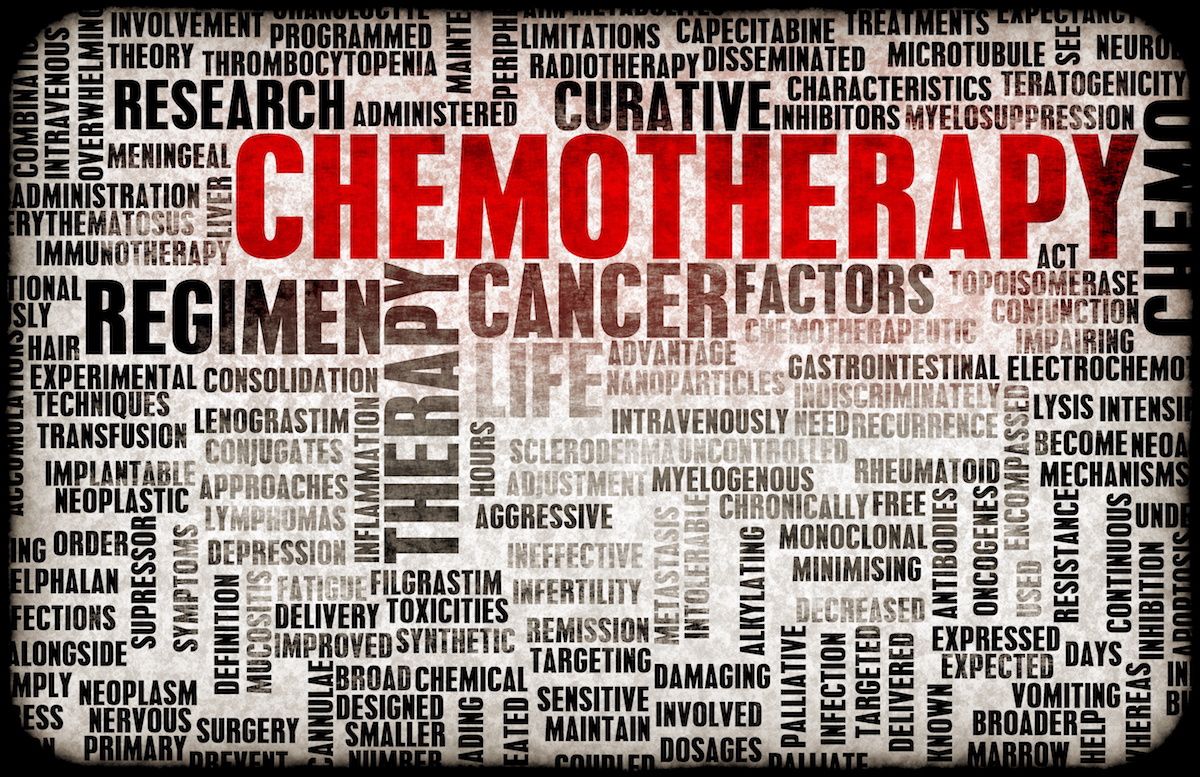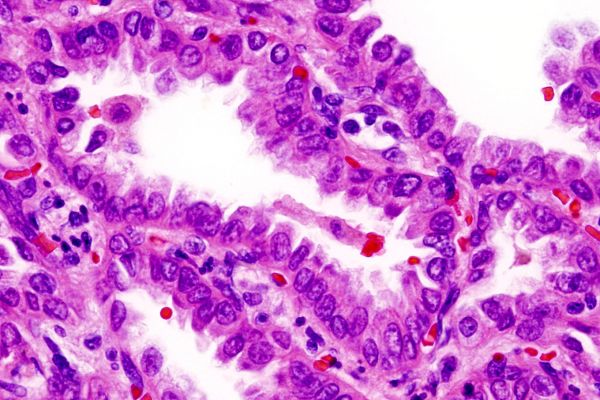One of the challenges a cancer diagnosis brings into your life is a new vocabulary.
When you’re facing important decisions, it’s vital that you understand the words your healthcare team is using to explain your options. Here are some common terms you may hear during diagnosis and treatment. We encourage you to ask your healthcare team for further explanation whenever you hear an unfamiliar term.
Words Related to Diagnosis
A cancer diagnosis is made by examining suspicious or abnormal cells under a microscope. Cells are usually collected by taking a biopsy of the tumor or (for blood and lymph cancers) the bone marrow. If cancer is found, the cells will be examined and tested more closely to identify the characteristics of the cancer.
- Benign: A tumor or abnormal cells that are not cancer. The abnormal cells are not invasive.
- Biopsy: A sample of cells or tissue removed from an area of suspicion. The sample will be examined under a microscope and tested to see if cancer or abnormal cells are present.
- Differentiation: This is a measure of how different the abnormal/cancer cells are compared to healthy cells from the same organ or tissue. “Well differentiated” means the abnormal cells are still very similar to the healthy cells. “Poorly differentiated” or “undifferentiated” mean the abnormal cells look quite different from the healthy cells. The greater the difference between the abnormal and healthy cells, the more likely it is that the abnormal cells will grow and spread faster. Differentiation is a part of grading a cancer, usually on a scale of 1-4. Grades 3 and 4 usually grow and spread faster than Grade 1 or 2 cancers.
- Histopathology: Examining cells and tissues under a microscope to detect and track the changes the disease has caused in them. A pathologist performs histological testing.
- In situ: Abnormal cells are in a single location and have not invaded local tissues.
- Invasive: Cancer has spread to nearby tissue, organs or lymph nodes.
- Localized: Cancer that is limited or confined to the site/organ where it began. (The location where the cancer began is called the primary site.)
- Malignant: A tumor or abnormal cells that are cancer. Abnormal cells grow uncontrollably and may spread to/invade other sites.
- Metastasis: Cancer has spread to sites far from where it began. This may be called a secondary cancer.
- Pathology: The study of disease, where it begins and how it will progress. A pathologist studies and tests the cells and tissue collected in a biopsy to look for disease.
- Prognosis: The expected outcome of your diagnosis, based on all available information about the cancer itself, the treatment chosen, your medical history and your current health.
- Refractory: The cancer does not respond to treatment.
- Relapse/recurrence: The cancer returns after the patient has been in remission.
- Remission: No evidence of the disease is found using currently available testing.
- Staging: A system used to describe the extent of the disease and, if it has spread, to indicate how far it has spread. Treatment choices may depend on the stage of a patient’s disease. Staging systems are usually for solid tumors. Blood and lymph cancers are assumed to be Stage 4, because the cancer cells can travel throughout the body in the blood and/or lymph systems. Restaging: After a treatment, or a course of treatment, the patient is staged again to see how they responded to the treatment
- Tumor: A clump of abnormal cells.
- Tumor markers: The National Cancer Institute defines tumor markers as “substances found in tissue, blood, bone marrow or other body fluids that may be a sign of cancer or certain benign (non-cancer) conditions.”
Words Related to Treatment
- Adjuvant: Treatment or therapy given after an initial/primary treatment or therapy to help reach treatment goals, such as preventing a recurrence of the cancer. Example: Giving radiation or drug therapy after breast cancer surgery.
- Curative therapy: The goal of curative therapy is to destroy the cancer.
- First-line therapy: Treatment that has been identified through research as having the highest probability of being effective against a specific cancer. Also called standard therapy.
- Neoadjuvant: A treatment or therapy given before the initial/primary treatment in order to increase the chances that the initial/primary treatment will be successful. Example: Giving radiation or chemotherapy to shrink a tumor before surgery to remove the tumor.
- Palliative therapy: Palliative therapy is used to relieve pain or other symptoms and improve the quality of life.
- Second therapy: Treatment given if a patient does not respond to the first-line treatment. Also called salvage therapy.
Words Related to Drug Therapy
- Chemotherapy: Drug therapy using cytotoxic agents. Chemotherapy zeroes in on cells that multiply quickly and destroys them. Cancer cells multiply quickly. Unfortunately, so do some normal cells (such as hair cells), which is why chemotherapy causes such side effects as hair loss and nausea.
- Chemoprotective drug: Given along with a chemotherapy agent to prevent or reduce its toxic effects.
- Cytotoxic: Kills or damages cells. Chemotherapy is a cytotoxic treatment, aimed at killing cancer cells, which keep growing and multiplying out of control.
- Hormone therapy: Drug therapy that adds, removes or blocks the actions of your body’s hormones. It is used to treat cancers that are “fueled” by certain hormones, such as breast, ovarian and prostate cancer.
- Immunotherapy: Immunotherapy agents don’t attack cancer cells directly, as chemotherapy does. Instead, they either boost or suppress your immune system so it can fight the cancer more effectively. Also called biological therapy.
- Nadir: The lowest point. Commonly used to describe the time period after chemotherapy in which blood counts are at their lowest point. When a patient is in the nadir for white blood cell count, red blood cell count and platelet count, there is higher risk of infection, anemia/fatigue and bleeding.
- Phases of chemotherapy: These terms are usually used when treating blood cancers such as leukemia:
- Induction: Given to induce a remission.
- Consolidation: Given once a patient’s cancer has gone into remission, to keep them in remission.
- Maintenance: Drug therapy given in lower doses to help a patient stay in remission.
- Targeted Therapy: A type of drug therapy that targets specific features of cancer cells and attacks just those cells, resulting in less harm to normal cells.
Words Related to Radiation Treatment/Radiotherapy
Radiation treatment involves the use of ionizing radiation to kill cancer cells. It’s considered a “local” treatment because only the tissues and organs within the targeted treatment area receive radiation.
- External radiotherapy: Radiation comes from a source outside the body.
- Internal radiotherapy: Radiation is given off by a source placed inside the body. Also called brachytherapy.
- Radiotherapy field: The area toward which the radiation is directed.
- Total Body Irradiation (TBI): Radiation to the entire body all at once. Used to destroy all the cancer cells before a stem cell/bone marrow transplant. You can find more radiation terms at U.S. Department of Health and Human Services REMM.
Never miss another Cancer Talk blog!
Sign up to receive our monthly Cancer Talk e-newsletter.
Sign up!Words Related to Surgery
- Anastomosis: Surgical connection between two structures; surgically joining two structures. For example, when part of an intestine is surgically removed, the two remaining ends are sewn or stapled together.
- Dehiscence: Partial or complete separation of the edges of a wound after surgery.
- Laparoscopic surgery: An operation that can be performed with just a few small incisions and special equipment that is inserted into the body through the incisions; a type of minimally invasive surgery.
- Margin: When a tumor is surgically removed, a rim of normal tissue surrounding the tumor is also removed. This rim is called a margin. When examined by a pathologist, margins help show whether or not all of the cancer was removed.
- Minimally invasive surgery: An operation that does not require a large incision.
- Open surgery: An operation in which the surgeon cuts through skin and tissue (incision) to reach the structures or organs inside the body.
- Resection: Surgically removing all or part of an organ or tissue.
Additional Words
- Acute: A condition that comes on quickly and lasts a short time. It can range from mild to severe.
- Central line: A thin plastic catheter (tube) inserted into a vein in the chest that can be used to give medication and fluids, and to draw blood.
- Chronic: A condition that lasts a year or more. It can range from mild to severe, but it usually requires medical attention.
- Drug resistance: When cancer cells do not respond — or stop responding — to a particular drug or drug therapy.
- Immunosuppressed: A condition in which your immune system is weak and you are more vulnerable to infection and disease.
- Late effects: Side effects or health problems that show up long after treatment ends.
- Neutropenia: Below-normal level of neutrophils, a type of white blood cell.

